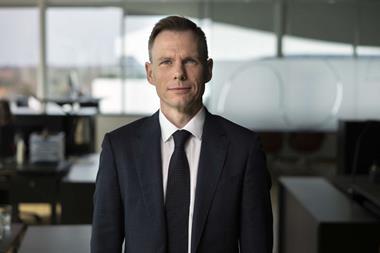Asset managers hide more than four-fifths of costs, with no reasonable justification given for why full disclosure is not being provided, a think tank has claimed.
Research published by The Pensions Institute, part of the Cass Business School in London, found that visible costs from asset managers only account for 18% of the total cost borne by investors.
The remaining hidden costs include the bid/ask spread, transaction costs, undisclosed revenue and other market-implied costs during transactions.
The Institute said that, even where asset managers aimed to increase cost disclosure, there remained hidden costs, and that full-disclosure was paramount.
“These are the indirect transaction costs for which investors pay via lower net returns,” the report said.
It said all good investment managers should have an estimate of the size for cash-costs relating to the efficiency of the investment management, such as commissions, taxes, bid/ask spread costs, transaction costs and undisclosed revenue.
The Institute did accept that non-cash costs, still borne by the investor through lower returns, would be more difficult. These costs include market impact, information leakage, market exposure and missed trade opportunities.
However, it did argue specialist advisers could obtain this information for investment managers, allowing them to disclose the impact to investors.
With regards to the cash-costs, managers argued the IT systems required to provide full disclosure would be expensive to implement.
But the Institute rejected this point.
For non-cash costs, it suggested configuring fund manager systems to generate similar information as can currently be provided, or periodic audits by consultants.
David Blake, author of the study and director at The Pensions Institute, said: “I would argue the principle of full transparency is paramount. Further, there is little point in requiring transparency where the reported measure for ‘costs’ does not include all of the costs, or, in the short term, as many as could currently be reported on a cost-effective basis.”
He added: “No good reasons have been put forward for why all the costs of investment management, both visible and hidden, should not ultimately be fully disclosed. They are, after all, genuine costs borne by the investor.”
The Investment Management Association (IMA), a lobby group for fund managers, argued it had already set out plans to increase transparency, including replacing the annual management charge and having a more basic charge structure.
Daniel Godfrey, chief executive of the IMA, said: “The third stage is to look further at how to account for indirect costs, and also to reach a consistent basis for the calculation and disclosure of portfolio turnover rates so clients can better understand the relevant investment processes.”
However, the True & Fair Campaign, which champions fee transparency, hit back at the IMA and said these were excuses for delay.
Co-founder of the campaign, Gina Miller, said: “This research proves the latest attempt to disclose all costs by the IMA, whilst dulcet in tone, is a pure farce.
“The IMA must act immediately to stop the abuse of people’s hard earned money and must interrogate and audit existing proposals and bring in total fee transparency by the end of this year.”
The report also argued that costs, which are provided to clients, may not be as simple as they look, such as declared commission on the purchase of assets.
“Investment managers often get ‘free’ services in exchange for this commission, such as broker research, market data or corporate access (to company managers),” the report said.
“But these ‘free’ services are actually paid for by the client. Investment managers frequently aggregate different clients’ trades to get the best price.
“The aggregated trades will go through a particular broker, which means some of these clients will be indirectly paying for research from which they get no benefit.”









No comments yet